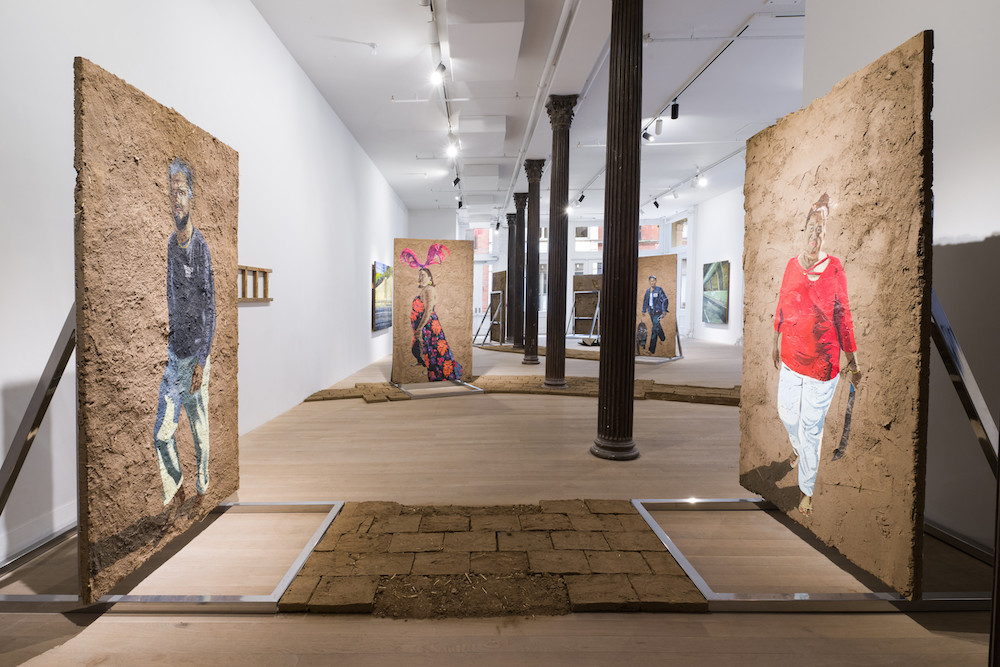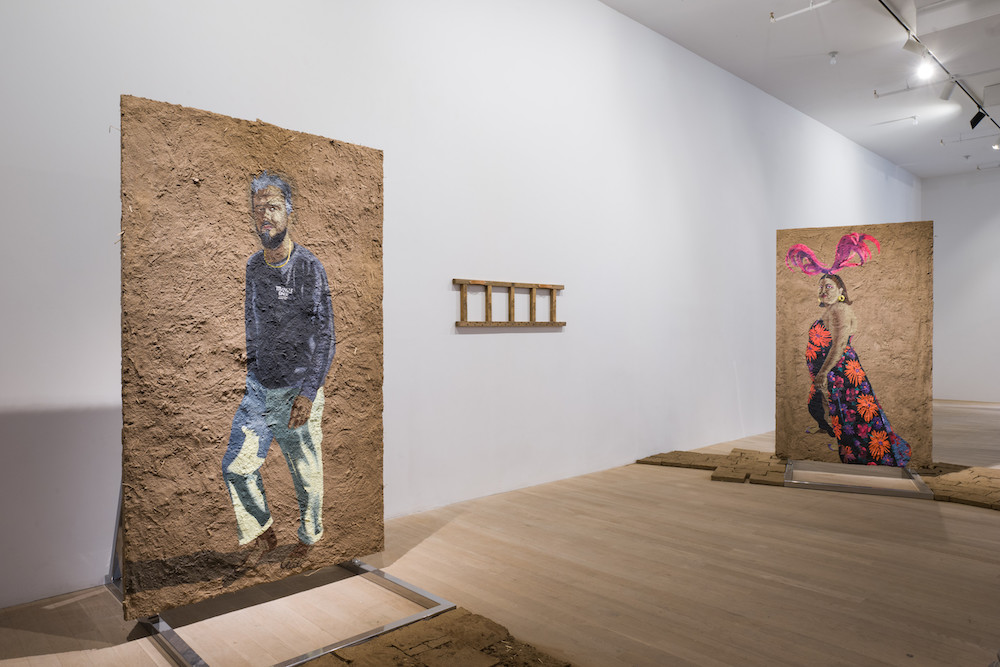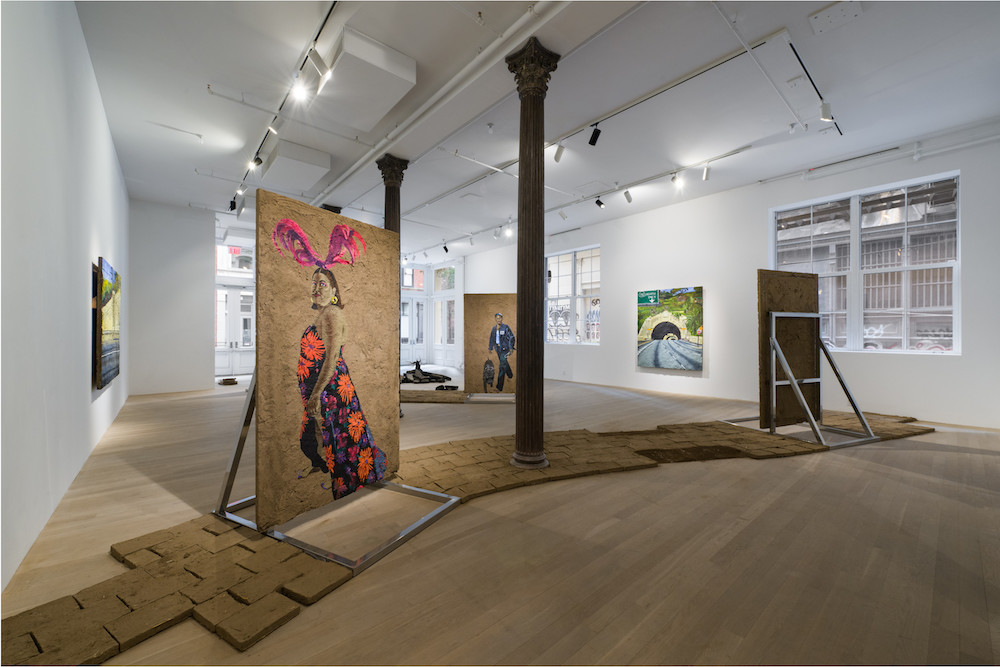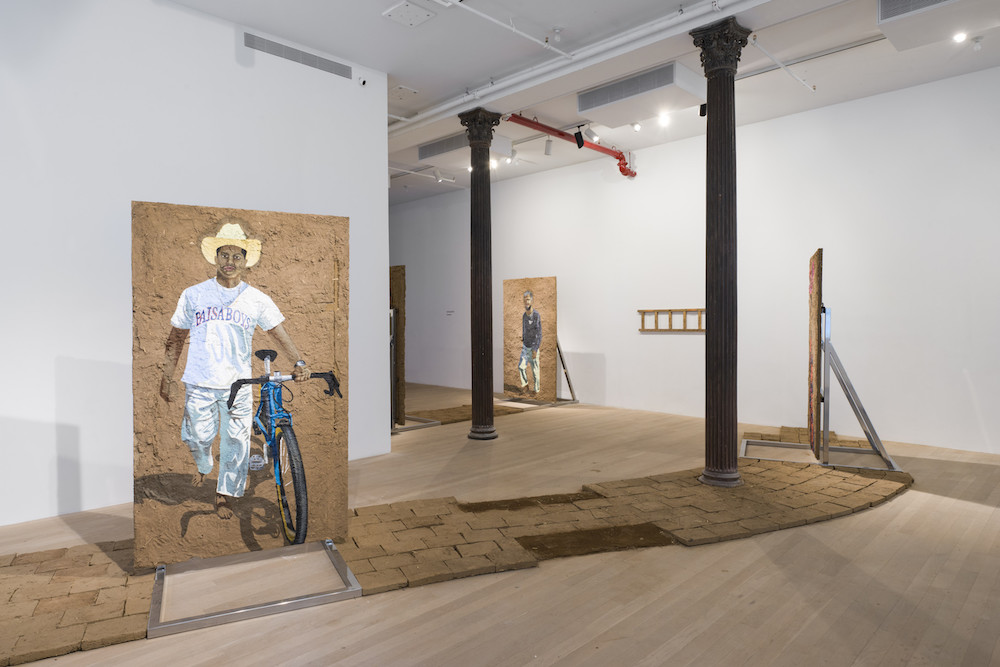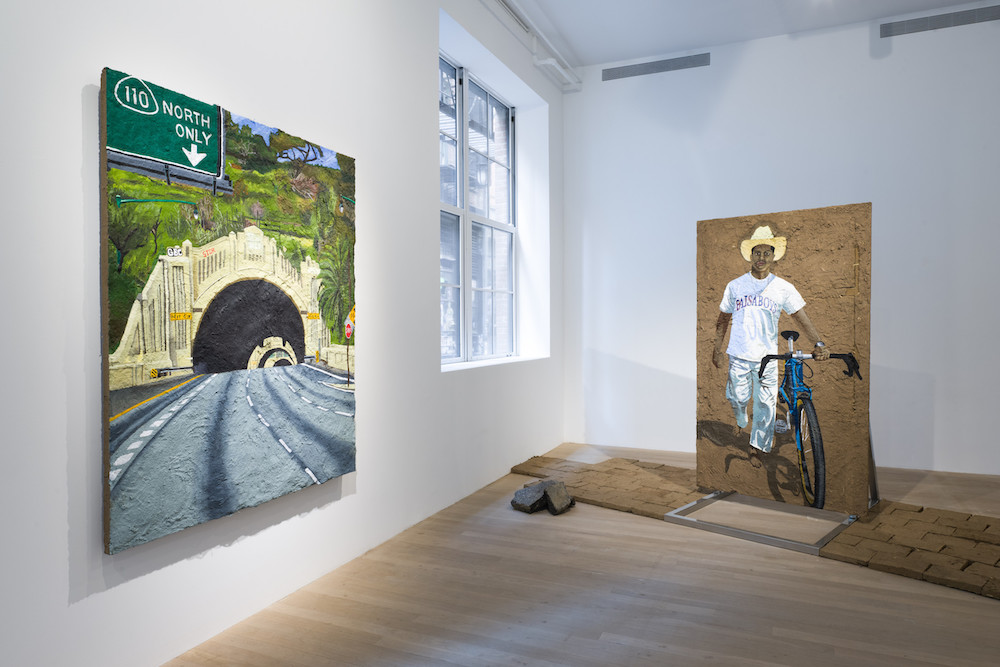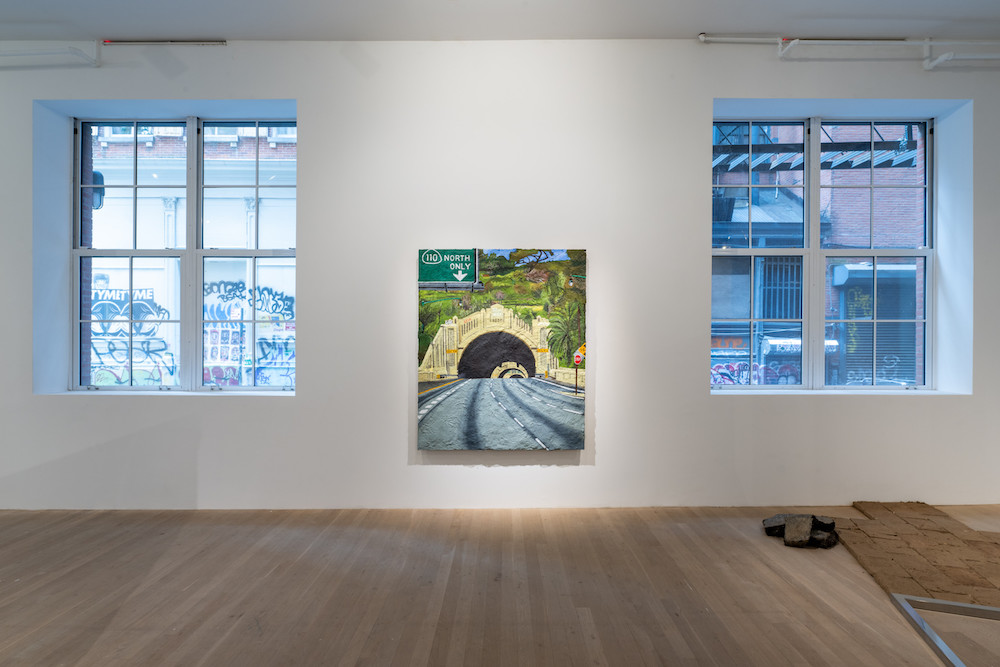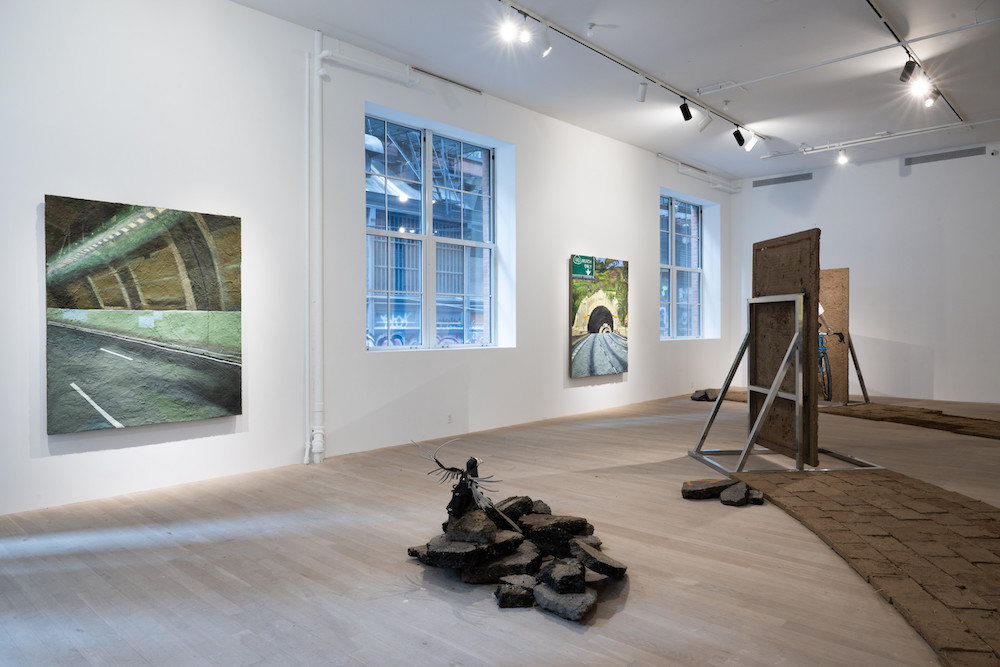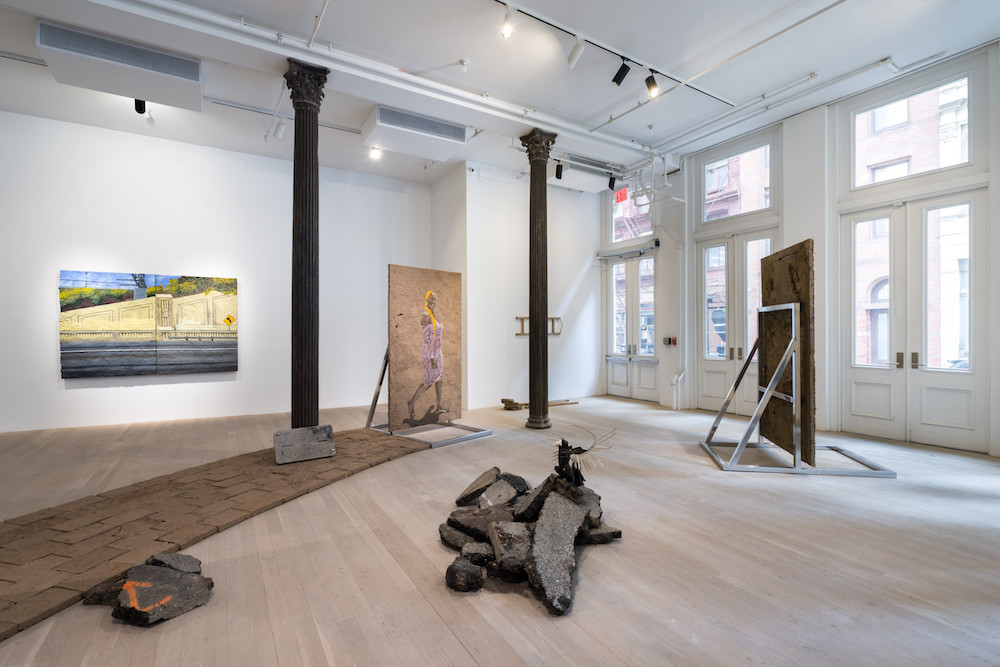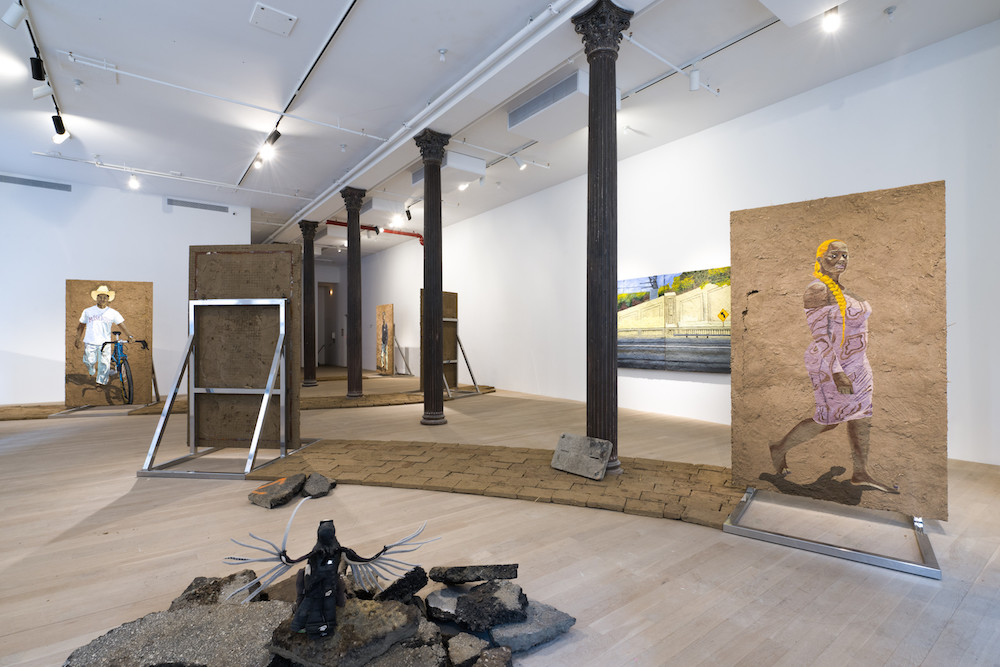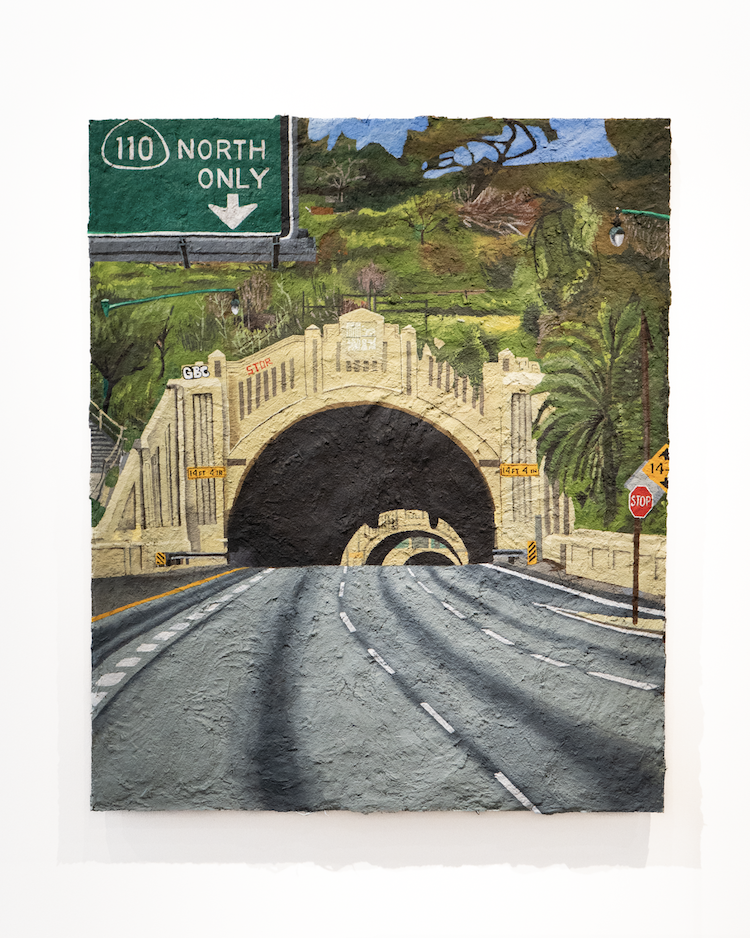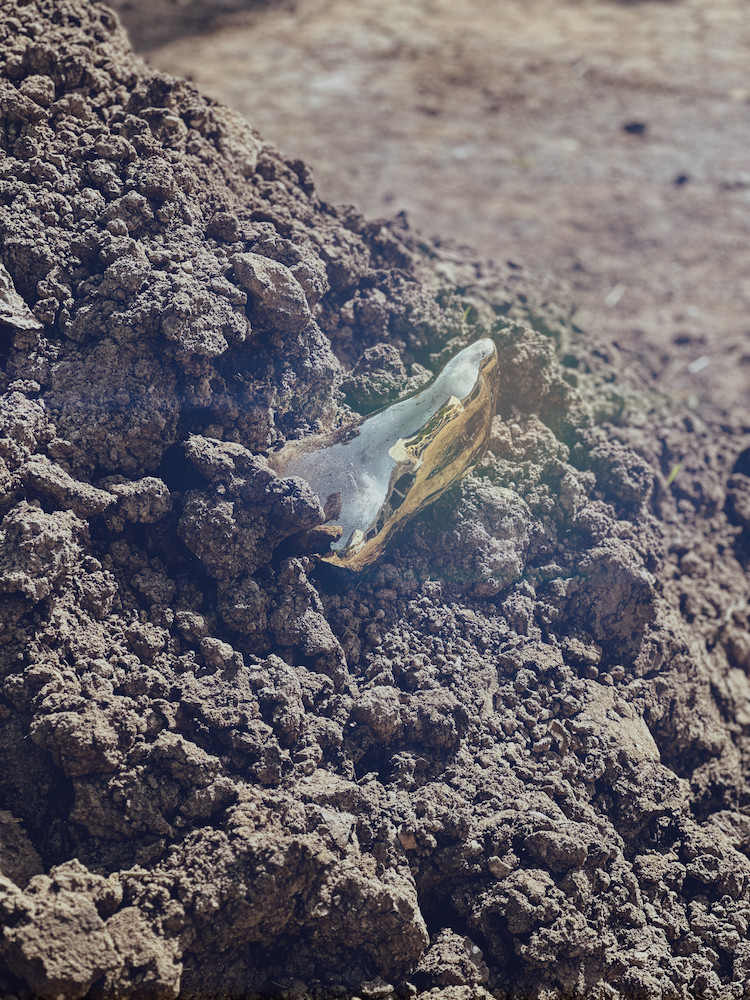One of the Jux staffs favorite artist at the moment, rafa esparza, is about close his NYC debut, Camino, on view at Artists Space through August 19th.
A painter, installation, and performance artist, esparza creates works that engage site-specificity and materiality in order to challenge dominant power structures. Camino is an immersive exhibit that comprises a material deconstruction of the Arroyo Seco section of the 110 Freeway in Los Angeles, the first freeway in the western United States. Architects championed the Arroyo Seco, completed in 1940, as an innovation in vehicular roadway systems and mobility. But the freeway is a living reminder of what the artist calls “the brute force of infrastructural planning that divided Los Angeles,” which primarily impacts gravely marginalized poor and working-class communities of color. The popularity of this urban-planning model was adapted by other cities across the country, resulting in an almost ritual-like approach to dividing communities.
In Camino (which in Spanish can mean either “road” or “I walk”), esparza transforms Artists Space with concrete rubble scattered about an adobe-paved road. Bringing together sculptures, painting, and earthen elements, Camino explores the continuum of urban renewal and redevelopment, and posits a possibility of material collapse. esparza populates the exhibition with portraits of barefoot people moving through space, foregrounding the history of working-class brown and Black communities’ severed relationship to land and simultaneously highlighting their customizations of mobile vehicles such as bikes, cars, and trucks. The aesthetics of these modifications—symbols of joy, celebration, comfort, and community—become a key element in the fabrication of esparza’s hybrid sculptures.



